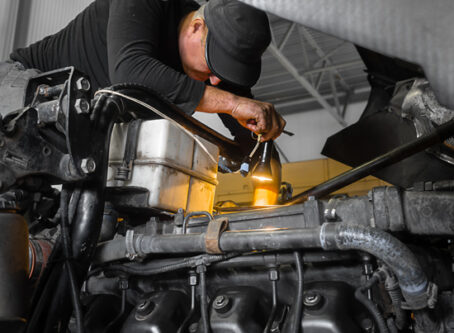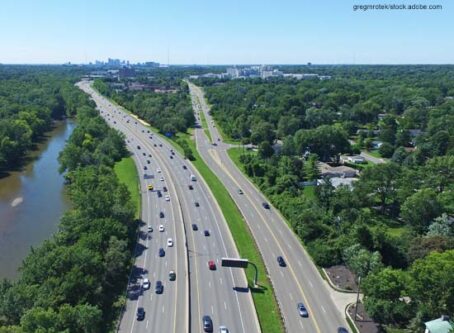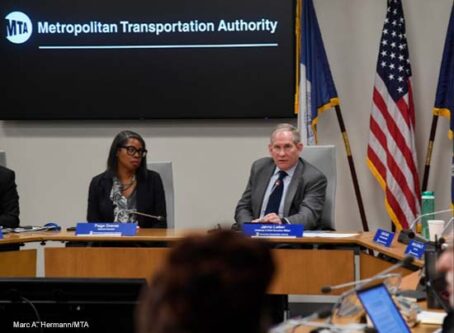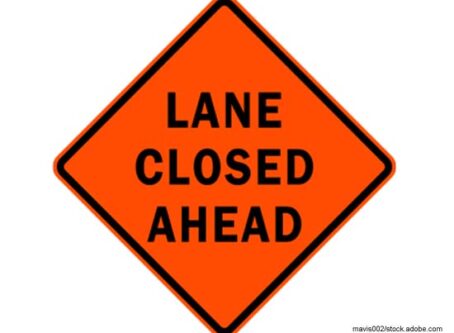Capital Beltway toll project struck down by regional transport board
The Capital Beltway toll project on Interstates 270 and 495 is on hold indefinitely just a month after transportation officials eliminated 30 miles of toll roads from the initial proposal.
On June 16, the National Capital Regional Transportation Planning Board held a monthly meeting to approve which highway and transit projects in the District of Columbia region will receive an air quality conformity analysis. The board was updating its long-range transportation plan called Visualize 2045.
During the meeting, the board approved changes to Visualize 2045, including eliminating the Capital Beltway toll project from the list of those receiving funding for an air quality conformity study. The move was part of an overall strategy to emphasize climate change commitments. According to the Transportation Planning Board, the vote essentially removes Maryland’s toll project from the June 2022 update of the regional plan.
By removing the Capital Beltway toll project from the long-range plan, it is essentially on hold indefinitely. An air quality study is necessary in order for the Maryland Department of Transportation to receive any federal approval for the project.
The board voted on the removal of the Capital Beltway with a weighted vote, with 16 in favor and 13 opposed. The vast majority of opposed votes came from Virginia representatives. With some members’ votes having more power over others, the weighted results were 9.2 in favor and 5.7 against.
On May 12, MDOT modified its Capital Beltway toll project after receiving criticism from public officials and stakeholders. The changes included eliminating 30 miles of proposed toll roads.
Debate over Capital Beltway toll project
Removal of the project came after the board debated the motion. Several board members expressed their support or opposition.
Those on the board who approved the measure were skeptical of the Capital Beltway toll lanes. Specifically, there were concerns about their effectiveness, impacts on communities and the fact the project does not have regional consensus. On the other hand, board members who opposed the removal claimed that the project would provide major economic and quality of life benefits to Maryland residents and the entire region.
One board member who opposes the Capital Beltway toll lanes is Gary Erenrich, special assistant to the director of the Montgomery County Department of Transportation in Maryland. The toll lanes would directly impact that county. In fact, Erenrich called for the motion to eliminate the project from the Visualize 2045 list.
“The Montgomery County executive does not support the inclusion of four new toll lanes on 495 and 270 in the conformity analysis for Visualize 2045,” Erenrich said. “The executive has substantial concerns about MDOT’s entire project development approach, including determination of the project limits, the definition of the purpose and need, the alternatives considered, the environmental impact analysis, the proposed P3 structure and contracting with the P3 developer partner before the environmental clearances are obtained.”
Erenrich went on to say that the county executive believes that congestion concerns in the corridor can be addressed with less costly and less environmentally impactful changes to the roadways. Additionally, replacing the American Legion Bridge should be a national infrastructure priority with federal money funding it. Furthermore, the Capital Beltway toll project interferes with plans the county has for its part of the corridor.
Rockville, Md., Mayor Bridget Newton also opposes the project. During the board meeting, she said the Capital Beltway toll project “is not ready for primetime.”
“This project does nothing to move our region forward,” Newton said. “Not in social justice, not in environmental justice, and not the way we should be going.”
In support of the toll project is Earl Lewis, the Maryland Department of Transportation deputy secretary. Lewis said Montgomery County’s plan “does not withstand the test of time” of the 25-year outlook of Visualize 2045 in regards to growth of that roadway.
“There’s no way we have to fund this if we don’t move forward with P3,” Lewis said. “As we have discussed at earlier meetings, congestion issue is a significant issue to the future growth of the region. This project by itself does not make a significant contribution to greenhouse gas emissions moving forward.”
Addressing the American Legion Bridge, Lewis said asking the federal government to fully fund the replacement would take away from federal money the state is asking for to implement transit projects.
Virginia Department of Transportation Chief Deputy Commissioner Rob Cary also supported the inclusion of the Capital Beltway toll project. Cary defended the P3 model by claiming the project would never receive funds otherwise.
MDOT could not be immediately reached for comment. LL









